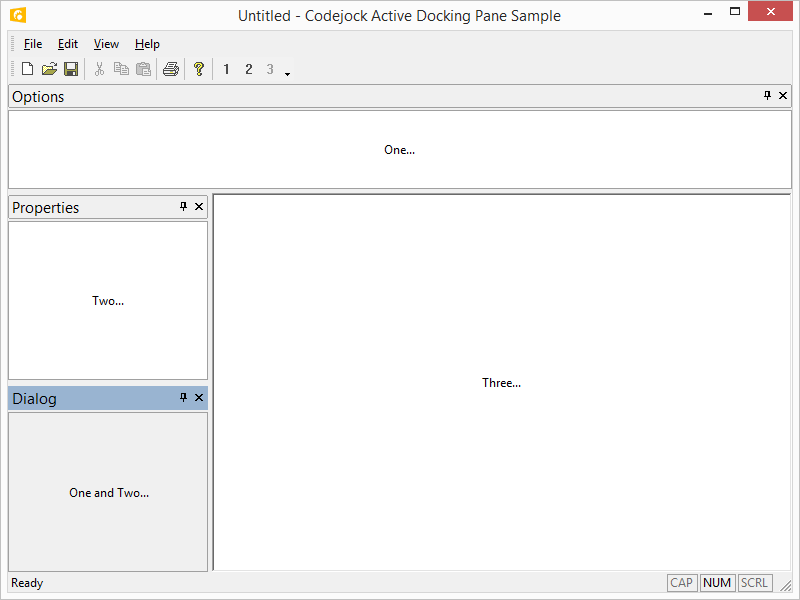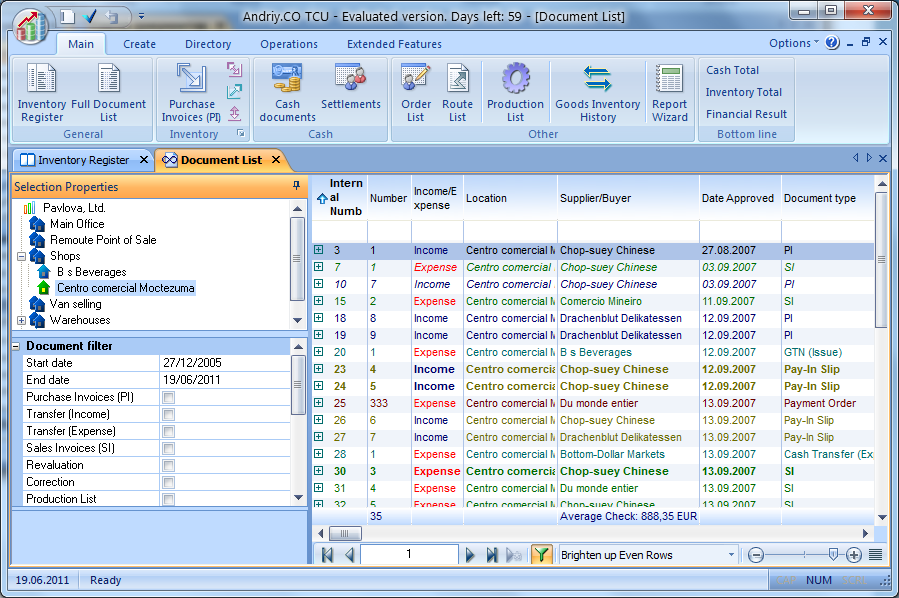
- #CODEJOCK DOCKING PANE WITH RIBBON HOW TO#
- #CODEJOCK DOCKING PANE WITH RIBBON FULL#
- #CODEJOCK DOCKING PANE WITH RIBBON PC#
- #CODEJOCK DOCKING PANE WITH RIBBON WINDOWS#
The differences between VBA and Visual Basic grow with each new version of Visual Basic that is released. And although the OnError statement is still supported in Visual Basic, you should consider using the structured error handling that try/catch statements provide. You still have access to many of the VBA-specific language features, such as MsgBox, although Visual Basic also supports the use of MessageBox. For example, you cannot assign a String to the Range property of a paragraph as you can in VBA instead, you must specify the Text property, as you see in the following code: ‘ VBA The default properties, popular in VBA, are not supported in Visual Basic or VSTO. There are also some data types that are no longer supported in Visual Basic, such as the Variant-instead, you can use the Object data type. One example is that an Integer in VBA is equivalent to a Short in Visual Basic and a Long in VBA is equivalent to a Visual Basic Integer. Some of the biggest concern data types, statements, and new language features. There are a number of differences in the language features available in VBA and Visual Basic. In addition, VSTO allows you to leverage your existing investments in VBA by extending your existing solutions with managed code.
#CODEJOCK DOCKING PANE WITH RIBBON FULL#
VSTO solutions are simple to deploy thanks to full support for ClickOnce. You can create custom document-level and application-level task panes and easily create and debug Office SharePoint® Server 2007 workflow solutions.

In addition, VSTO has many new features targeting the 2007 Microsoft Office system, including visual designers, which make it easy to create custom form regions and customize the Ribbon.
#CODEJOCK DOCKING PANE WITH RIBBON WINDOWS#
VSTO brings you the full feature set of Visual Studio, including language-integrated query (LINQ), Windows® Presentation Foundation (WPF), Windows Communications Foundation (WCF) and the.

NET Framework, Visual Studio® Tools for Office (VSTO) in the next version of Visual Studio, code-named "Orcas," makes the move easier and more compelling. If you develop for Microsoft® Office using Visual Basic® for Applications (VBA) and have not yet made the jump to the Microsoft. This article uses the following technologies: Calling VSTO from VBA and VBA from VSTO.Language differences between VSTO and VBA.Click on the Power button in the lower right corner of the Start menu.This article is based on a prerelease version of Visual Studio "Orcas." All information herein is subject to change.Click on the Start icon in the taskbar.The simplest way to restart Windows 11: using the Start menu.
#CODEJOCK DOCKING PANE WITH RIBBON PC#
To make the changes take effect, you should restart your PC or restart the Windows Explorer.
#CODEJOCK DOCKING PANE WITH RIBBON HOW TO#
This page mainly shows you how to move taskbar Windows 11. Luckily, there are some workarounds available for moving the taskbar on Windows 11. It seems that Windows 11 can’t move taskbar the taskbar is stuck on the bottom of the computer screen. However, when it comes to Windows 11, the latest Windows operating system, the options to change taskbar location are removed. People can open the taskbar settings window and select the taskbar location on the screen according to their needs: Bottom, Top, Left, and Right. Microsoft allows users to change the location of the taskbar easily in Windows 10, Windows 8, Windows 7, and even older operating systems. Does this mean the Windows 11 taskbar is fixed forever and people can’t change its location anymore? Of course not there are some workarounds. However, the new system – Windows 11 – won’t let users move the taskbar as usual. In all previous versions of Windows operating systems, users can move the taskbar easily to left, right, and top of the screen.


 0 kommentar(er)
0 kommentar(er)
